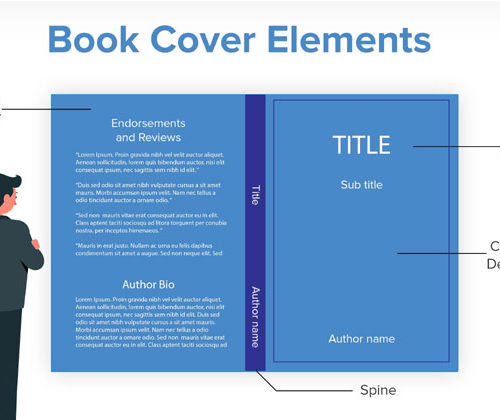
- Front Cover: The outer panel of the book that faces outward when the book is closed. It typically includes the title, author’s name, cover illustration, and other design elements to attract readers’ attention.
- Title: The name of the book, prominently displayed on the front cover. It helps identify and distinguish the book from others.
- Author: The person who wrote or created the book. The author’s name is usually featured on the front cover, alongside the title.
- Publisher’s Logo: The graphical representation or trademark of the publishing company responsible for producing and distributing the book. It is often displayed on the front cover, spine, and/or back cover to identify the publisher.
- Cover Illustration: Visual artwork or design elements used on the front cover to enhance its visual appeal. It can be a photograph, drawing, painting, or graphic design that relates to the book’s content or themes.
- Back Cover: The outer panel of the book located opposite the front cover. It often includes the back cover blurb, synopsis, author biographies, testimonials, and other marketing information to engage potential readers.
- Synopsis: A brief summary or overview of the main plot, themes, and characters of the book. It is typically found on the back cover or inside flap, providing readers with a glimpse of what the book is about.
- About the Author: A short biography or description of the book’s author, often found on the back cover or inside flap. It provides information about the author’s background, achievements, or relevant details that give readers insight into the author’s perspective or expertise.
- Barcode: A visual representation of data that can be scanned by a barcode reader to identify the book’s product information, such as the ISBN, price, and other details. It is commonly found on the back cover or inside flap.
- QR Code: A two-dimensional barcode that can be scanned by a QR code reader or smartphone to access digital content or additional information related to the book. QR codes are often used in marketing materials or books to provide an interactive and convenient experience for readers.
- Spine: The narrow edge of the book that runs along the binding. It typically displays the title, author’s name, and sometimes the publisher’s logo. The spine allows the book to be identified when placed on a shelf with the spine facing outward.
- ISBN (International Standard Book Number): A unique identifier assigned to a book to facilitate cataloging, ordering, and tracking. It is commonly found on the back cover, inside flap, or copyright page. The ISBN helps identify the book and its specific edition.





